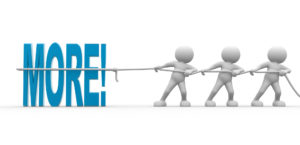If the field of Laban-based movement study is to grow, theoretical research must be on-going, public demand for the services of movement professionals must be cultivated, and the field must be self-governing so that incompetent and unethical practices are not tolerated.
Since its inception in 1991, Motus Humanus has addressed these needs in a variety of ways.

Research and Publication. Through our Seed Money program, Motus Humanus has provided over $3000 of funding for research, publication projects, and archival support. We have published two monographs, contributing copies to universities where Laban Movement Analysis or Labanotation are taught. We have encouraged movement specialists to write and publish, running advanced seminars and sponsoring a writing contest, with winning essays made available for download on our website.
Self Governance and Standards of Practice. Motus Humanus has served as the certificating body for individuals qualifying in Movement Pattern Analysis (MPA). With the support of Warren Lamb, creator of MPA, Motus developed a written examination and portfolio review process. We went on to establish the Warren Lamb Trust as a standing committee with a mission for MPA analogous to that of the International Council of Kinetography Laban for Labanotation. We managed to do this prior to Warren Lamb’s death in 2014.
Now that the community of Movement Pattern Analysts has grown sufficiently, Motus Humanus has provided funding for the Warren Lamb Trust to become an independent organization. This became fact in the spring. So the functions of maintenance of standards, promotion, and development of MPA, so carefully tended by Motus Humanus for over two decades, is being carried forward by the Warren Lamb Trust.

 Since 1991, Motus Humanus has been serving the Laban community by providing various services to support movement professionals as they develop their post-certification careers. These include the following.
Since 1991, Motus Humanus has been serving the Laban community by providing various services to support movement professionals as they develop their post-certification careers. These include the following. The diversity of applications of movement analysis showcased at the June conference in Montreal was awesome. And that is just the beginning….
The diversity of applications of movement analysis showcased at the June conference in Montreal was awesome. And that is just the beginning…. As one of 12 Laban Movement Analysts who participated in a 2014 research project comparing our observations with those of 12 experts in the French system of Functional Analysis of the Dancing Body (AFCMD), I was keen to hear the preliminary results of the study.
As one of 12 Laban Movement Analysts who participated in a 2014 research project comparing our observations with those of 12 experts in the French system of Functional Analysis of the Dancing Body (AFCMD), I was keen to hear the preliminary results of the study.